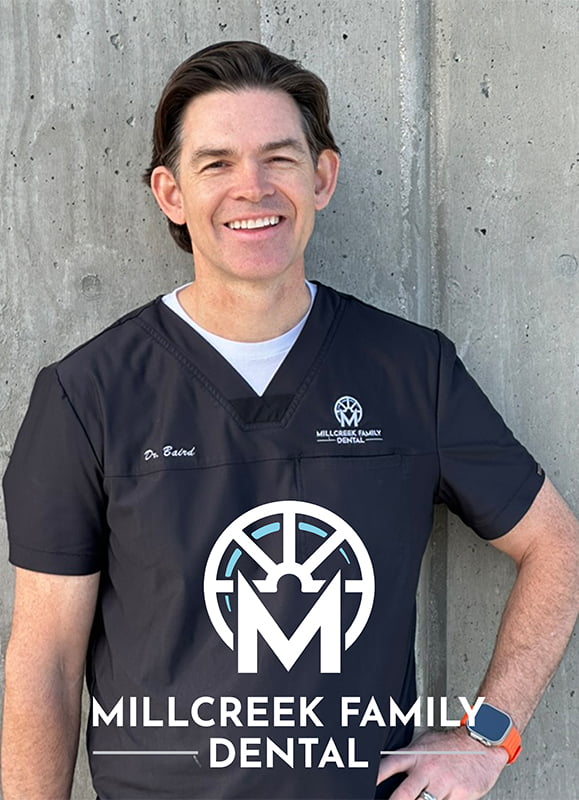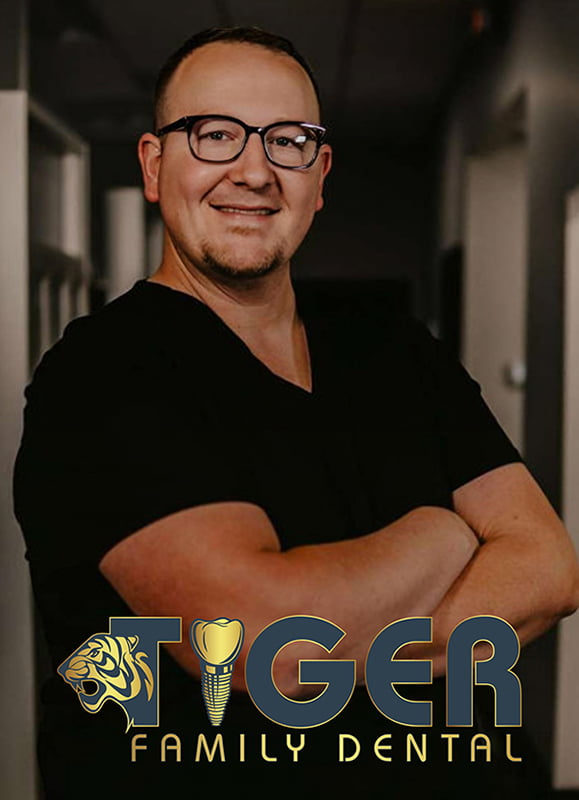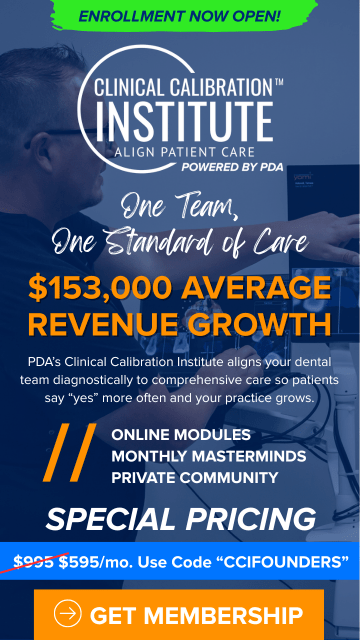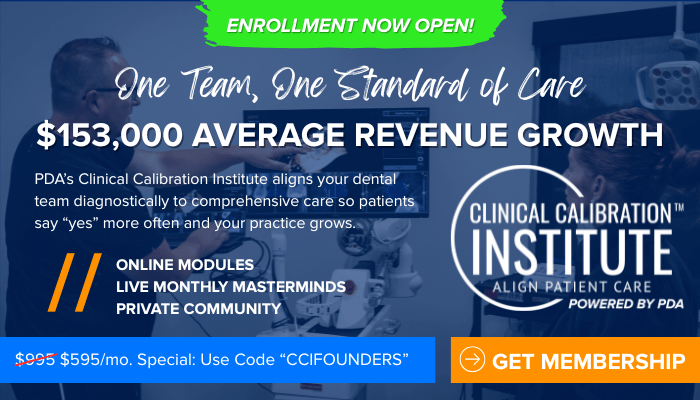Episode 104 – Requested Replay: Why Team Members Leave
“68% of your employees leave because they didn’t get along with their supervisor.” ~ Victoria Peterson
Why would people want to work for you?
The answer is simple (but not easy): you’ve created a culture that is so strong, supportive, clear, and vibrant that exceptional workers choose to join and stay because they believe in your mission.
Doctors interested in building an Investment Grade Practice know that in order to create stability in their business they need a healthy, safe, supportive culture for their team to thrive in.
And this is the secret key to team management that not many people talk about, your Cultural North Star. Owners who want to build stable, thriving Investment Grade Practices understand the importance of that Cultural North Star.
So join me today as I give you some secrets on what a Cultural North Star is and how you can leverage yours to craft your dental practice culture with a few management tools including::
- A short culture quiz: Answer a few questions to see where your culture ranks
- The power of team surveys…and what secrets they tell you
- Employee marketing: are you telling people why you’re an awesome employer?
EPISODE TRANSCRIPT
Regan 0:00
Hi, Dr. Regan Robertson, CCO of Productive Dentist Academy here and have a question for you. Are you finding it hard to get your team aligned to your vision, but you know, you deserve growth just like everybody else? That’s why we’ve created the PDA productivity workshop. For nearly 20 years, PDA workshops have helped dentists just like you, align their teams, get control of scheduling, and create productive practices that they love walking into every day. Just imagine how you will feel when you know your schedule is productive, your systems are humming, and your team is aligned to your vision. It’s simple, but it’s not necessarily easy. We can help, visit productivedentist.com/workshop that’s productivedentist.com/workshop to secure your seats now.
Victoria Peterson 0:49
And perhaps this has happened to you as your practice grows bigger and bigger and you implement middle levels of management, and department heads and leaders, and things like that. 68% of your employees quit their job, not because of you know the typical things like pay and benefits, but because they didn’t get along with the supervisor, and if you’re that supervisor, you certainly want to know if they’re getting along with you or not. So team surveys done anonymously can tell you where you’re winning, as a leader and as a company, and where there’s some room for improvement.
Narrator 1:26
Welcome to Investment Grade Practices podcast where we believe private practice dentists deserve to get the lifestyle today while building an asset for tomorrow. Join your host, Victoria Peterson, who designed the practice of your dreams and secure your financial independence. Let’s get started.
Victoria Peterson 1:50
Welcome to another episode of Investment Grade Practices and I’m wondering, are you winning the cultural wars? No, I’m not talking about diversity inclusion in the whole nation’s political scheme here. I’m talking about how do you really build a Cultural Northstar with your team because that’s what’s going on in the marketplace when we talk about talent shortages and attracting the right people to our practices. You know, as a nation, we’re kind of burned out on day after day adult jobs with no recognition and it’s going to take more than a paycheck to attract and retain top talent. Now I know the pay increase is top of mind for everybody but when you really peel it back, why do people stay in your practice? Why do you want to keep them in your practice? and it really comes down to coming together as a team around what we call a cultural Northstar. A set of values, beliefs, and habits that bind everyone together. So let’s take this quick test, this is straight from our IGP scorecard, and there’ll be an assessment link in the show notes here today. So there’s five quick questions, and to build a cultural Northstar, these are parts of the components. So on a scale of one to five, one being I didn’t know I needed it, five is yeah, I’ve got that in spades, and I could teach it. So the first question, my team knows and lives our values and philosophy of care, where do you rank yourself on a one to five? Number two, our team holds each other accountable for our Code of Conduct. If you don’t have a code of conduct, give yourself a one. If you’ve got one, and they hold each other accountable, give yourself a five.
Victoria Peterson 3:30
The next question, we have HR processes for attracting hiring, training, and retaining top talent. Number four, we regularly survey the team to gauge our employee Net Promoter Score, and number five, we have an effective incentive program that provides recognition to top performers. Let’s spend a few minutes today breaking these down and let’s go in reverse order. How many times have you set up a bonus program and the team’s bonuses while your paycheck is shrinking? That is absolutely no fun as a dental practice owner, I’ve done that it’s no fun. So the basis for incentive programs is really about recognition, recognition for a job well done. That’s why programs that incentivize product sales, you know, toothbrushes, mouthwashes, whitening, things like that, they really tend to backfire because they fragment the team, they may appear to be working, but really if you incentivize products that have a high overhead, sometimes you might as well just give the product away because between the bonus and the cost of the product, you’re not making any money. So I like incentive plans that really incentivize behaviors. If you’re a PDA client, you’re really familiar with the Graph Back, Dr. Ken Smith created this, was almost 15, 20 years ago and it’s still a charm. It focuses on daily productivity, are we scheduled to goal and if we’re not scheduled to goal, have we put forth efforts to fill the schedule and stay on goal? As Dr. Baird often likes to say, “I only have two goals in my practice, one, to hit my goal, and two take great care of my patients,” and your incentive program should revolve around that. Once you’re really good at the daily incentive, daily grab bag, that adds about 1% cost to your overall staff salary. So it’s, it’s not a very expensive incentive program at all, you can then start moving to a collection bonus, and beware, before you implement a collection bonus, you’re going to want to work with your coach, your financial planner, your CPA and truly understand your overhead. We call this your profitability and center point or your PIP. It takes into account not only today’s expenses, but also your debt repayment, and ROI to you as an investor in this business and making sure that the doctor is paid not only his current salary, but has funded 401K’s and retirement plans.
Victoria Peterson 6:11
So knowing your PIP, your profitability incentive point, understanding that recognition programs are there to encourage and recognize positive behaviors, this is how you set a foundation for great incentive programs. Now this next piece, Do you regularly survey the team and gauge your E Net Promoter Score, whew, this is a scary one. If you, if you ever wake up and say,”Am I a great leader, or I’m nervous, I know I should have conversations with my team, but I’ve postponed them so long now it’s awkward.” All of those things, all of those fears can build up and it quite honestly can paralyze you as a leader and make you not want to do this. Our coaches do a great job of sending these surveys blind, anonymous, giving the team safety to say what they need to say and then we aggregate the data in a way that you as a leader can hear it. So we take all the names out, we try to make it as anonymous as possible. So you can’t even tell which department it’s coming from, but this is where true leadership can be built and I know we’ve been doing regular employee surveys for over three years now, since before the pandemic started. Bruce and I transformed our company into an employee-owned company. So it’s really important that I hear what our team has to say, because they’re not my employees, they’re my partners and as the CEO of the company, it’s my job to listen and to serve. So without those surveys, I would have missed valuable, valuable information and perhaps this has happened to you as your practice grows bigger and bigger and you implement middle levels of management, and department heads and leaders and things like that. 68% of your employees quit their job, not because of you know the typical things like pay and benefits, but because they didn’t get along with a supervisor, and if you’re that supervisor, you certainly want to know if they’re getting along with you or not. So team surveys done anonymously can tell you where you’re winning, as a leader and as a company, and where there’s some room for improvement. It can also tell you what the sentiment is regarding benefits and pay scales so that when you have performance reviews, you’re armed with data, not just emotion.
Victoria Peterson 8:49
Alright, how many of you are looking for new employees? Do you have a process for attracting them? Have you gone in and claimed your Indeed profiles, your Glassdoor profiles? Did you know that you can really I want to say pimp those out? You can really build those out like you do my Google My Business. So just like you want to get five-star reviews from your patients, are you building out your Indeed platform and asking your engaged employees to go in and do a review, let the world know what it’s like working for you? Have you started doing videos for attracting new team members letting them know what it’s like having your team do some testimonial videos just as you have your patients do testimonial videos? I think employer marketing is on the forefront of progressive Marketing For Dental Practices today. So most dental practices have more than enough patients right now, in fact, the trend is going off of going out of network, reducing the number of patients, balancing fee schedules, things like that. So where do you market next? No, you always have two, two customers, really, you’ve got your patients and your team. So as an employer, are you marketing to your team? What’s your reputation in the community? If you had an opening tomorrow, would it be easy to fill or difficult to fill based on your reputation? That’s what employer marketing is all about, but once you attract them, you need to give them a great offer letter and provide training. This is what really helps retain top talent. People today want to know that there’s a career path that they can build skills, not just waste time, especially, especially if they’re driving to work, and they have to go into a building. We don’t have a problem attracting talent, because we’re mostly a virtual company, but a dental practice, that’s brick and mortar, you’ve got to have great reasons and satisfying that need for growth and significance goes a long way for retaining top talent. All right, the last two, our team holds each other accountable to our code of conduct and we live our core values and philosophy of care. First of all, you got to write these things down.
Victoria Peterson 11:31
If you don’t have great job descriptions that say, you know, “When we open the practice, this is what you do throughout the day with the patients. This is what you do, as we close the practice, this is what we do.” We call that your job, your job description. That’s how you hold people accountable. You have to understand what it is you want them to do, so that it can become measurable and create a scorecard. Do you have a code of conduct that says, you know, “We agree, we agree to start on time, to stay on time, to finish together, to not leave the practice until we all finish together? We agree not to gossip, gossip is a cancer.” Whatever it is for you, it’s something that you come together as a team and decide this is who we are, this is how we play and then your team starts to become self-governed. That’s always my goal, is how can I create a self-governed team of leaders that love to lead themselves, and they love to lead each other? Once you hit this, this is like the golden, the golden pinnacle of leadership, is when people have the emotional intelligence to say, “Wow, I made a mistake and I’m, I’m sorry for that and I’m going to do better in the future.” When when you start hearing that show up in the practice of people, loving their success, owning their success and celebrating it but also owning their failures. For me, that is the hallmark of leadership. That is the number one thing to contemplate perhaps out of this whole podcast is how do I handle failure in my company and that more than anything else determines how safe your team is going to feel and sharing, “Hey, Doc, I’m sorry, I just you know ported a tray of birds down the sink,” and they will safe enough to tell you they drop something down in the sink, then you might be able to catch it before it gets to the P trap and save yourself hundreds of dollars. If they don’t feel safe, then you’re not going to know about it and it’s literally flushed down the drain. So creating safety is what is really the true goal of having systems of accountability Code of Conduct through your job descriptions and through the expression of your values and your philosophy of care. Hey, I know this is, you know kind of a vague topic, it’s not very numerical building your cultural Northstar, but truly when, when it comes to the end of the day, if all money were equal, wouldn’t you rather work in a place that you love to work than a place that you just dread to go to? So whether you’re the owner or the team, that’s the focus of this week of building an Investment Grade Practices, how do we come together to make this a place that everybody wants to work?
Narrator 14:25
Thank you for tuning in to this episode of Investment Grade Practices podcast. If you find value in this episode, help us spread the word by passing it along to a dental friend. Subscribe and give us a Like on iTunes or Spotify. Learn more about building your Investment Grade Practice at productivedentist.com Today
Have a great experience with PDA recently?
Download PDA Doctor Case Studies


















